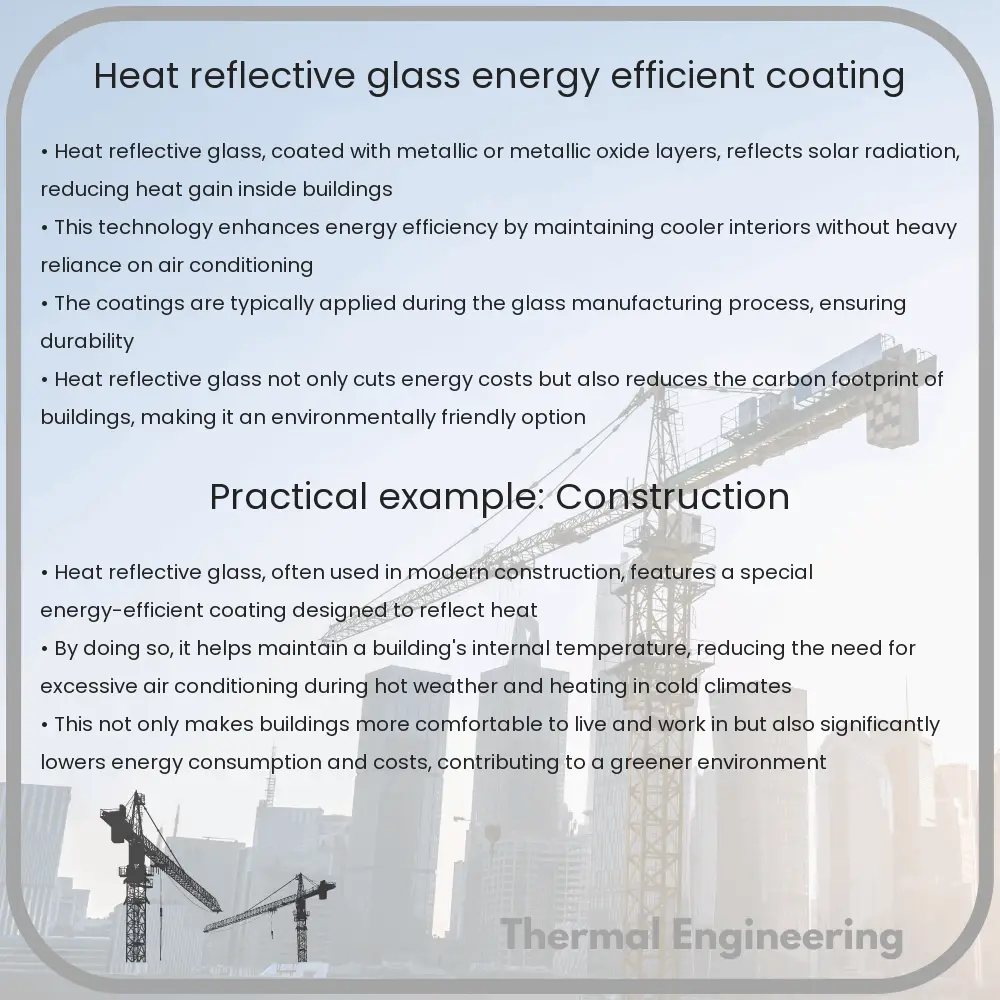Learn about heat reflective glass and its role in enhancing energy efficiency and comfort in modern buildings through advanced coatings.

Understanding Heat Reflective Glass and Energy-Efficient Coatings
Heat reflective glass, also known as low-emissivity or low-E glass, is a type of energy-efficient glass designed to minimize the amount of infrared and ultraviolet light that passes through your windows, without compromising the amount of visible light transmitted. This innovative glass technology is critical for reducing energy costs and enhancing comfort in buildings, making it an essential component in modern window and facade engineering.
How Heat Reflective Glass Works
Heat reflective glass features a microscopically thin coating that is applied to one side of the glass. This coating reflects heat and reduces the transmission of UV and infrared light, while still allowing the full amount of visible light to pass through. The technology behind the coating involves metallic oxides that are deposited on the glass surface. The thickness and composition of this reflective layer are precisely controlled to target specific wavelengths of light.
Types of Energy-Efficient Coatings
- Passive Low-E Coatings: Developed to retain heat and reduce the loss of warmth during colder weather. They are typically applied to the inner panes of glass in double-paned windows.
- Solar Control Low-E Coatings: Used primarily to control solar heat gain and reduce the need for air conditioning during warm periods. These coatings are applied mostly on the external pane of glass in double-pane windows.
Benefits of Heat Reflective Glass
- Energy Efficiency: Heat reflective glass significantly reduces energy consumption by maintaining consistent internal temperatures. This translates to lower heating and cooling costs.
- Comfort: Reduction in drafts and cold spots near windows, which leads to a more comfortable living and working environment.
- Protection from UV Light: Low-E coatings can block up to 99% of UV radiation, which helps prevent fading and damage to fabrics, artwork, and furniture.
- Reduced Condensation: The internal surface temperature of the glass remains closer to room temperature, which reduces the potential for condensation on the windows.
Comparative Performance of Standard vs Heat Reflective Glass
A standard glass window typically has an emissivity rating of about 0.84, which means it emits 84% of the energy possible for an object at its temperature. In contrast, a low-E glass window can have an emissivity as low as 0.04, reflecting back 96% of inferred and radiative heat. This level of reflection results in a substantial difference in thermal insulation capacity.
Applications of Heat Reflective Glass
Heat reflective glass is extensively used in both residential and commercial buildings. It is particularly beneficial in structures that have large expanses of windows like skyscrapers, office buildings, and modern homes. Beyond buildings, this glass is also used in certain vehicle windows and in environmentally sensitive architectural projects that aim for maximized energy efficiency and minimal environmental impact.
Conclusion
Incorporating heat reflective glass into architectural designs mitigates energy consumption, reduces costs, and enhances indoor comfort. As the demand for sustainable building materials continues to grow, the role of innovative solutions like heat reflective glass and energy-efficient coatings becomes more crucial in the field of engineering and construction.